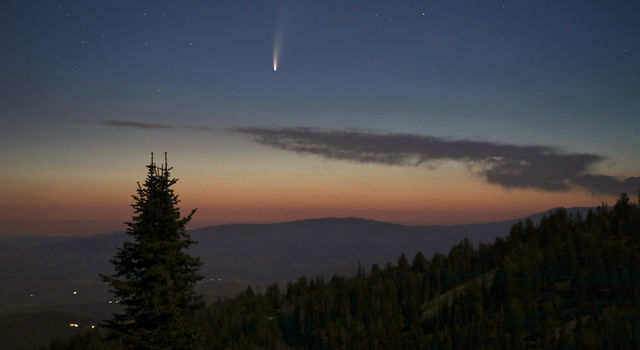Blogs | Southern Exposure | December 3, 2015
STO-2 Instrument
The project I came to Antarctica to work on, the Stratospheric Terahertz Observatory II, or STO-2, is a balloon-borne mission designed to trace the phases of the interstellar medium, which is the gas and dust between the stars. This gas and dust follows a life-cycle that can be traced with atoms such as carbon, nitrogen, and oxygen. These elements radiate in the terahertz (THz) region of the electromagnetic spectrum, which is the region between microwaves and infrared, hence the name Stratospheric Terahertz Observatory (it is our second flight, hence the II).
The STO-2 instrument is specifically designed to look at the star forming phase of the interstellar medium. Each atomic tracer transmits its own spectral signature, which can be thought of as its own radio station. We build radio receivers specifically tuned to look at each of the frequencies being emitted by the tracers. The technique used is called heterodyne detection and it mixes two signals near the same frequency to provide extremely high spectral resolution (the process is described below). The high spectral resolution is important because it enables us to look at the Doppler shift of the sources, which can be used to calculate the physical properties of the cloud in order to provide a better understanding of the star-formation process.
A block diagram of a heterodyne receiver. The sky signal is mixed with a local oscillator signal generated in the lab. In astronomy, we often use superconducting mixers for their extremely high sensitivity. The intermediate frequency is amplified using a low-noise amplifier (LNA) and then filtered and amplified as needed to match the power desired by the spectrometer. Image credit: Jenna Kloosterman, PhD thesis.
Our instrument has three frequency bands to observe nitrogen, carbon, and oxygen in the Milky Way. The nitrogen and carbon bands each have two pixels and use multiplier chains as local oscillators. The oxygen band has one pixel and uses a quantum cascade laser as a local oscillator. A local oscillator is a lab-generated signal near the target frequency. It is then mixed with the incoming sky signal. The mixers (aka the detectors) are bridges of niobium nitride called hot electron bolometers (HEBs), which when cooled to 4 K (-452 degrees F) are a superconducting material. Generally, a mixer can be thought of as a switch. When the sky signal and the local oscillator are in phase, the mixer is in the "on" position. When they are out of phase, the mixer is in the "off" position. This creates a beat frequency, like playing an instrument out of tune (sound waves instead of light waves, but the effect is the same) referred to as an intermediate frequency.
In reality, the process with a superconductor is a little more complicated. A superconductor has infinite electrical current at 0 V because electrons are moving with no resistance. When a local oscillator signal is applied to an HEB, it heats some of the electrons in the superconducting bridge so that they no longer have infinite currents, i.e., they are no longer superconducting. The incoming sky signal modulates the size of the "hot spot" on the bridge, which modulates the resistance of the bridge in a manner much like the on/off switch analogy.
This past week, we have been very busy aligning the local oscillators. The local oscillator signal is quasi-optically injected via a beam splitter, which reflects a small percentage of the local oscillator power in the direction of the hot electron bolometers (see the diagram above). This alignment is very hard since the beams are not optical and we cannot see them with our own eyes. Since the local oscillator power is heating the superconducting bridge, we instead monitor the hot electron bolometer current to find the local oscillator beam. It requires a lot of patience and a bit of luck.
After successfully aligning all five pixels, we mounted the local oscillator plate to the cryostat and fixed it in place. Once the alignment was complete, it was time to integrate the instrument to the gondola and telescope. This successful integration occurred on Tuesday and is now almost complete. The control and back-end electronics all had to be mounted and connected. Furthermore, when flying in the stratosphere, the instrument and gondola can get very, very hot and zap the electronics on-board the balloon. Therefore, most of the funny looking gold loops you see on the gondola in the picture above are cooling loops running cold water to keep the room temperature instrument and electronics cool at altitude. This system also needs to be connected.
All in all, the project is going very well down here. There is still a lot of work to be done, but we hope to start with systems-level observatory testing tomorrow. Unfortunately, we are still waiting on the upper atmospheric winds to set up over the continent, so a launch is still a few weeks away.
TAGS:STO-2, ANTARCTICA, MCMURDO, ASTRONOMY, ASTROPHYSICS, BALLOONING









